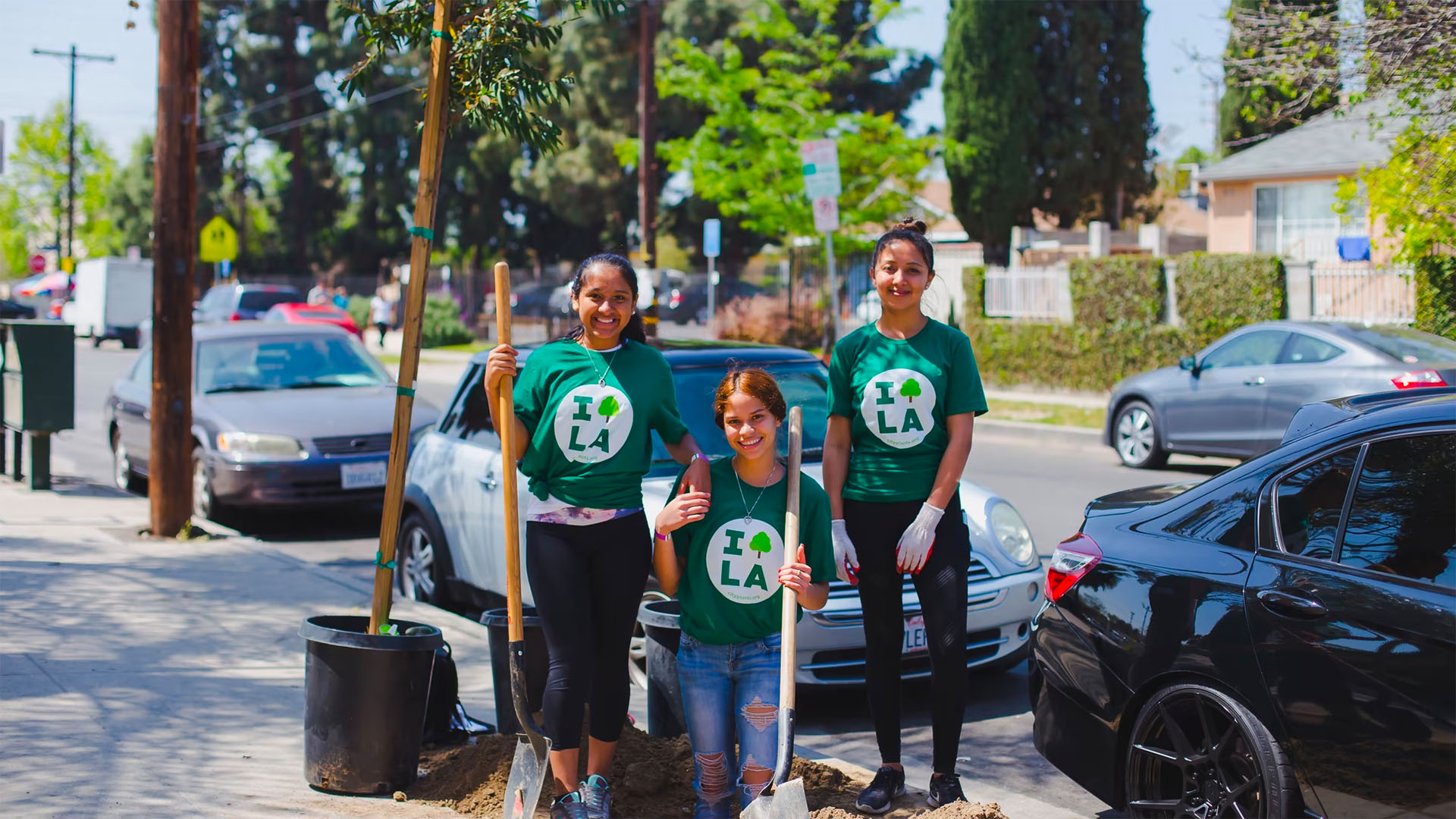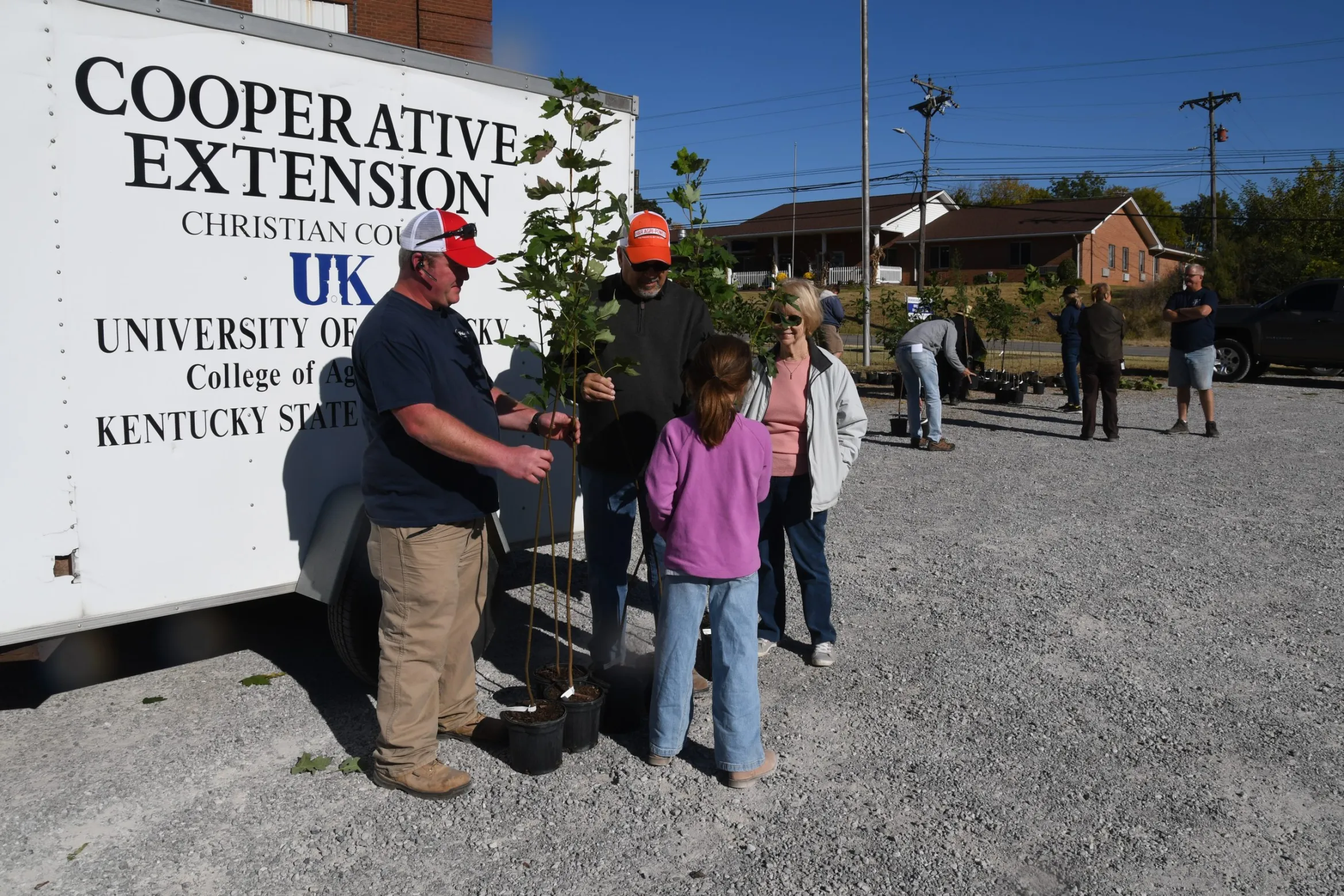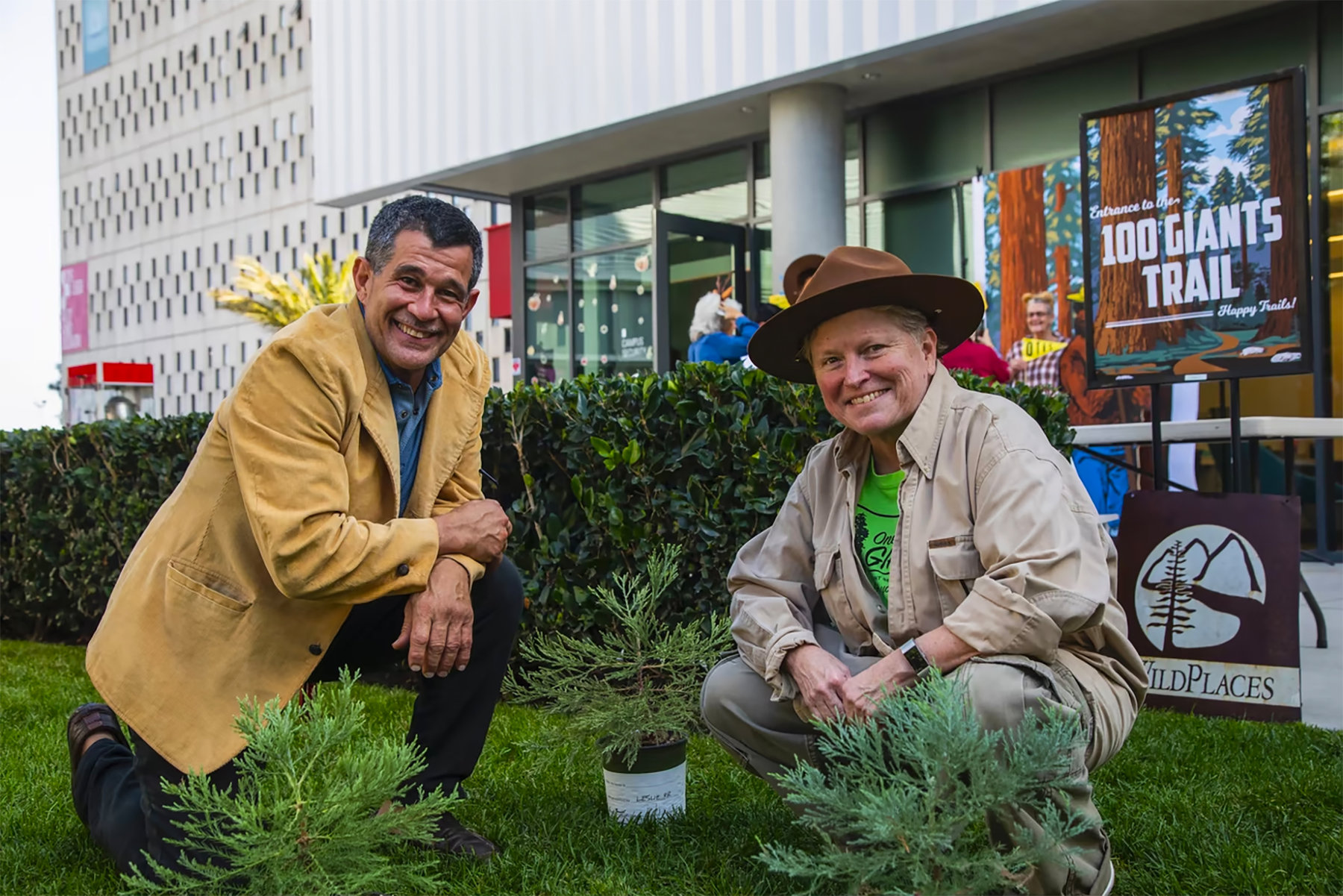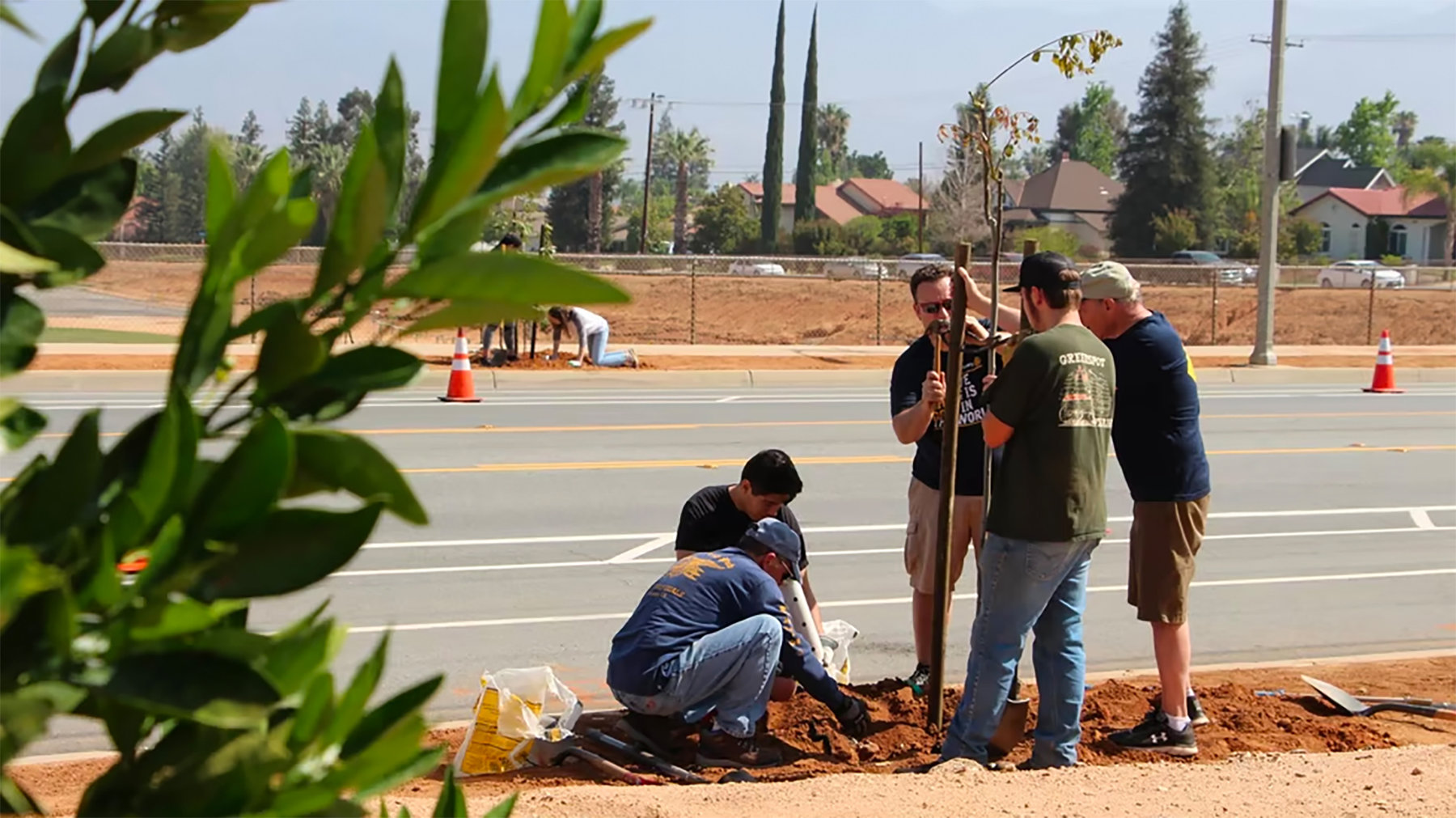What is the most effective thing an individual can do about climate change? There are lots of possible answers: what you eat, how you vote, where and how you live, how you travel, and so on. Every one of them matters. For Americans, at this moment, the one that matters most may be how you vote.
But among the steps most immediately within many people’s control, one of them is planting trees. Yes, there are cautions about doing this in the wrong way, or in the wrong places, or in ignoring the legacies of long-standing biases in zoning and city planning. (That is: It’s easy to plant trees in spacious residential neighborhoods; it’s harder when there’s only a narrow strip of ground between the street and a building front.) But overall, step-by-step reforestation can potentially be a significant help, which is why Deb Fallows and I have chronicled a number of local efforts toward that end.
I am chagrined to say that until I looked into it, I had no idea that the second-largest city in the nation—Los Angeles, with its population of nearly 4 million people spread out over roughly 500 square miles—has a very ambitious program to use tree planting as an axis to connect job creation, climate sustainability, urban renewal, and economic equity and inclusion. (Perhaps it would have helped if I’d read at least the headline of a very good Mother Jones story by Jackie Flynn Mogensen last year. The headline was, “Los Angeles, a City Known for Its Freeways, Is About to Plant a Shit Ton of Trees.”)
As it happened, I learned about the LA program largely by accident. The smallish Southern California town of Redlands had set an also-ambitious goal, of helping school children there plant more than 12,000 trees, which I wrote about when it was announced last year. The seedlings were purchased; a computerized way to map and track each one’s progress was set; and they were supposed to be passed out to school children on Earth Day this past April. That plan naturally hit a roadblock when California schools were shut down. As an alternative, the backers of the effort, including the University of Redlands and the tech company Esri, managed to give away thousands of trees in June. But still some 4,000 seedling trees went unclaimed.
Mainly through the efforts of our friend Shelli Stockton, of the University of Redlands, those little trees ended up last month in the hands of an organization called City Plants in Los Angeles (as shown in this video). City Plants, which is part of the LA city government, is part of a broader LA effort toward radical expansion of the “urban forest” cover in this famously sunbaked part of the world.
I talked this week with Rachel O’Leary, a native Angeleno who now directs City Plants, and with Rachel Malarich, a longtime expert in urban forestry who last year was named the city’s first-ever City Forest Officer. Here is what they told me about what they are doing, and why it might matter elsewhere.
How City Plants started: Last year, in presenting his “Green New Deal” vision for the city (which you can download in full PDF version here), Los Angeles mayor Eric Garcetti set out a tree-planting campaign as one element of a larger sustainability-and-jobs strategy. The plan set a target to “plant and maintain” at least 90,000 trees across the city by 2021, and to keep planting trees at a rate of 20,000 per year. This was largely initially based on the “Million Trees” initiative under Garcetti’s predecessor, Antonio Villaraigosa, but has evolved over the past decade to focus on planting the “right tree in the right place.” Garcetti’s Green New Deal also was explicitly focused on “canopy equity”—that is, of extending more of the benefits of large-tree cover to neighborhoods that are now typified by asphalt and concrete rather than greenery.
/media/img/posts/2020/08/TreeSign/original.png)
What it does: The City Plants program, as part of the larger urban-forestry program, offers trees to residents of Los Angeles at no cost. Angelenos can get up to seven free “yard trees” for their own property, which they are expected to plant and care for themselves (with instructions like those shown in this picture). They can also request free “street trees,” which a City Plants team will plant for them. (Residents must agree to water the trees for five years.)
For the labor involved in planting and handling the trees, City Plants coordinates with a variety of nonprofit and neighborhood groups —of which its major partner is the LA Conservation Corps. This LACorps is designed to give young people workplace skills, while they work on projects of larger community value.
How is it financed? From a variety of public and private sources (info here), but mainly by LA’s main public utility, the Los Angeles Department of Water and Power, or LADWP. Long-standing policy in California requires utility companies to underwrite energy-efficiency programs, including tree planting. LADWP has supported tree planting and innovations in urban forestry in Los Angeles for over a decade. The rationale for including trees as energy-savers, which you can find in longer and more detailed form here, is not just that tree growth stores carbon directly, as the trees mature. It is also that leafed-out tree cover reduces electricity and water use, especially the demand for air-conditioning. With support from LADWP, City Plants has an online calculator in which residents enter their street address, and get estimates of energy-bill savings from planting trees, in real time.
“Trees are one of the least expensive, and most powerful, tools we have for improving our environment,” Rachel Malarich told me. “More and more research is showing how important a good, healthy tree canopy cover is for our communities as a whole—and how important it will be not just for our health right now but for our resilience in the face of a changing climate.” (Malarich went into more detail on these features in the Mother Jones interview.)

I asked Rachel Malarich how that would be possible, considering that many areas now short on trees are also short on areas to plant them. The extensive suburban-style portions of Los Angeles were designed to include leafy glades; others have barely an unpaved square inch to support plant growth.
“Trees need space to grow, and much of our infrastructure was set up not to allow that space,” Malarich said. “Frequently in these high-need areas you’ll only have a four-foot-wide parkway, where you can only plant a small tree. Or there are overhead power lines.” I asked, given these realities, how the city could realistically expect to equalize tree coverage across the city. It would be complex, and hard, and would involve short- and long-term creativity and planning, she said. But that was the deadline the city’s plan set out, “putting our feet to the fire.”

Does it matter outside LA? The scale of Los Angeles makes anything that happens there consequential in its own right. But Rachel O’Leary argued that the partnership model—connecting different parts of the city and state government, and linking job-training and community-justice initiatives to climate sustainability—would be “replicable and scalable in other places.”
“Trees are a powerful tool of climate resilience,” she said. “This is definitely one of the most powerful actions a resident can take, to take climate change into their own hands. That it is how we view it here in this city. And we would encourage other cities to develop partnerships like these.”
“We’re not the only city that is dealing with this,” Rachel Malarich said. “If we can figure out this way of dealing with this issue of tree canopy inequity, we will have figured out something for other people to look at and learn from.”
Is any of this “the” answer, for neighborhood justice, civic engagement, and climate sustainability. Obviously not. But it could well be part of an answer, in this large city and elsewhere.




